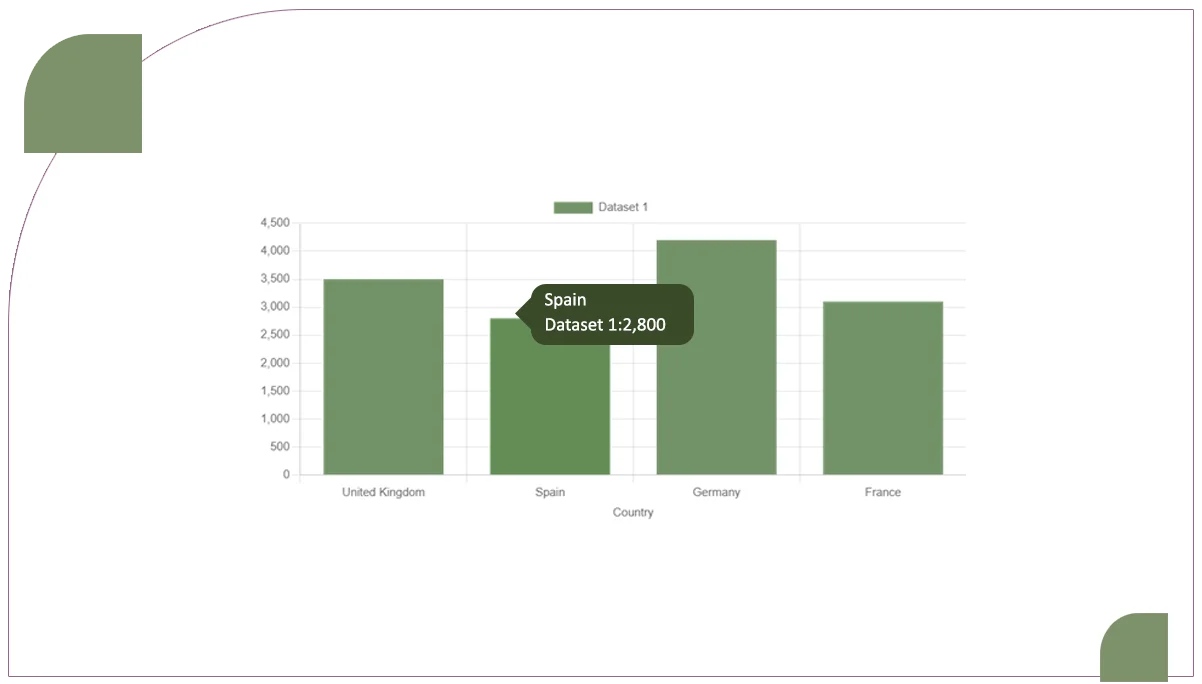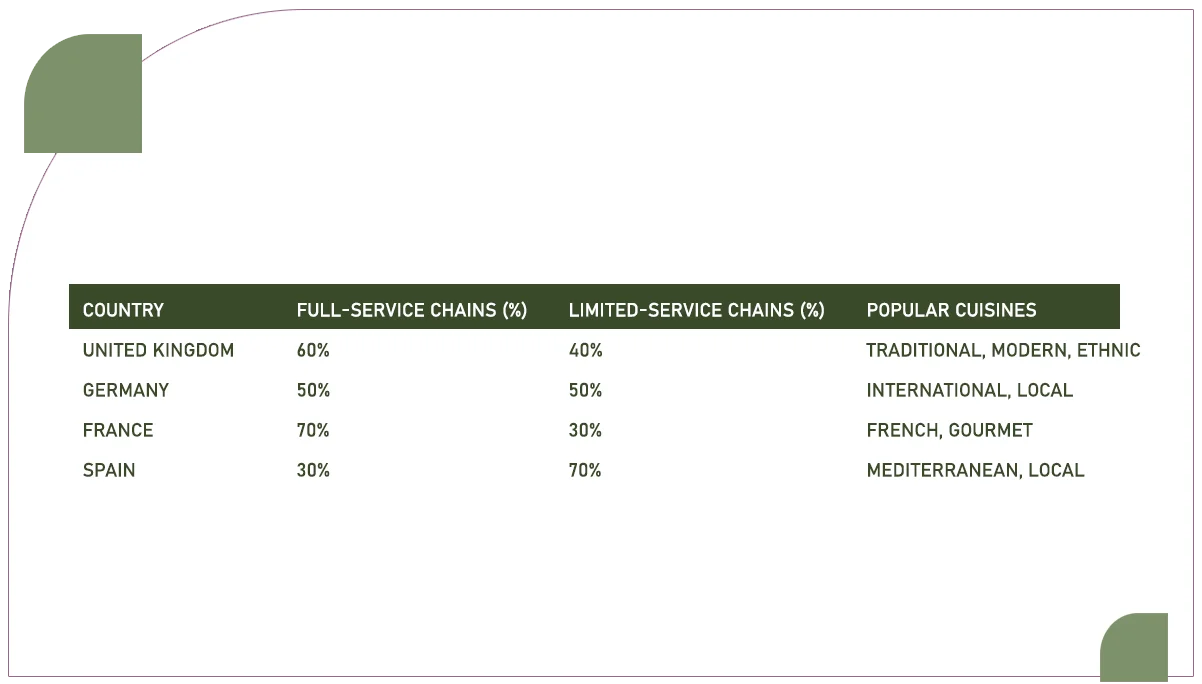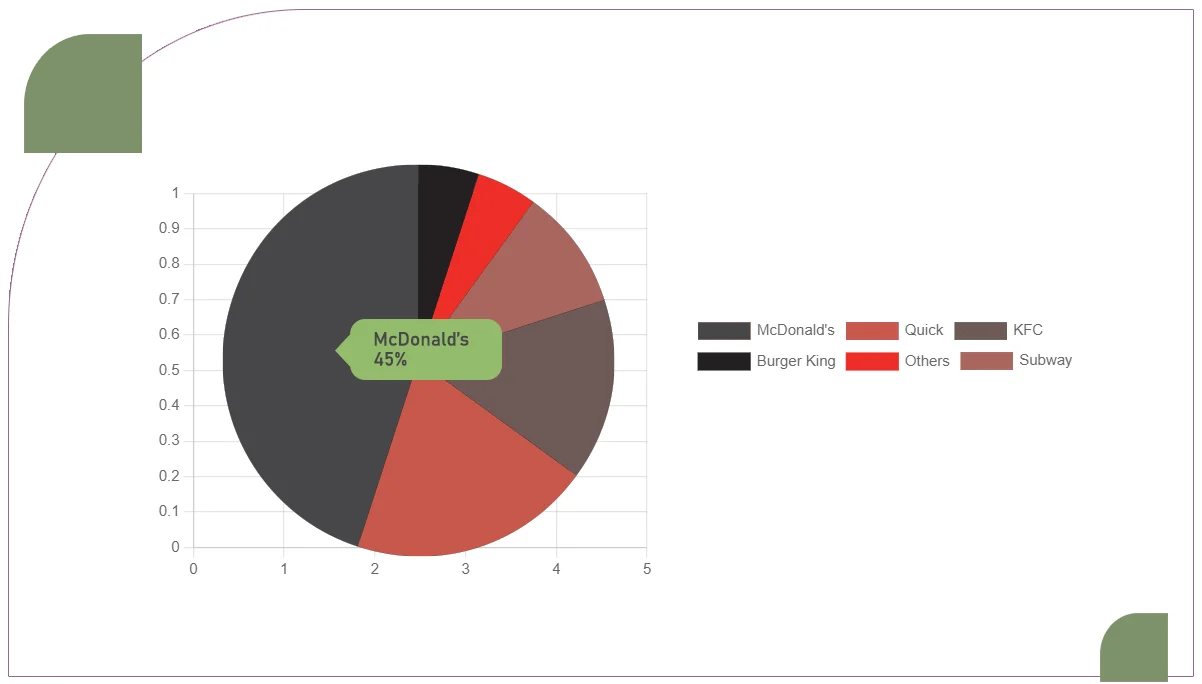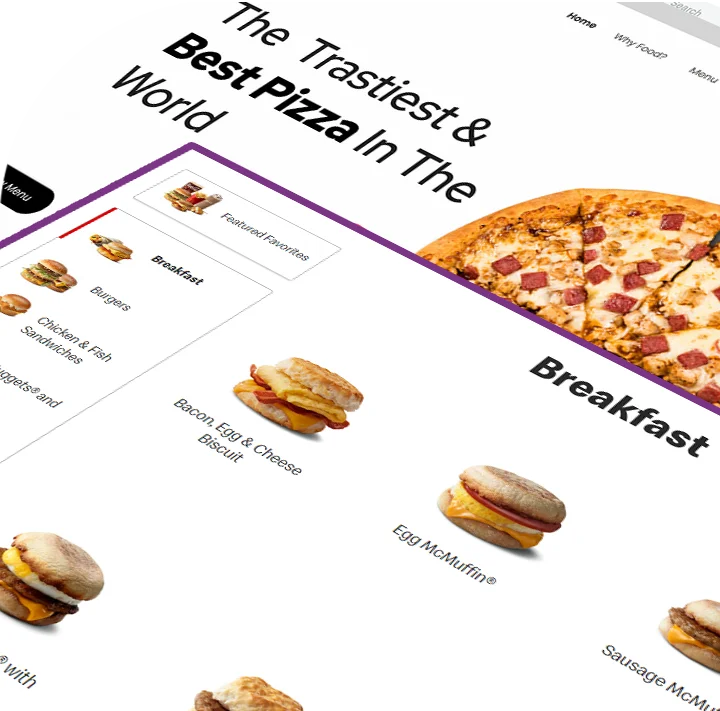Chain Segment Overview Across European Countries:
This subsection offers a comprehensive overview of chain restaurant locations across the leading European countries: the United Kingdom, Spain, Germany, and France. Analyzing the density and distribution of chain restaurants in these countries provides key insights into the characteristics of the European restaurant market and its consumers.
The restaurant industry in the United Kingdom has more domestic and global branches, as seen in the following restaurants. The chain restaurant market in Spain is diverse, with a mix of historic and modern restaurants for tourists and residents. The German market is easily recognizable due to its marked growth and consumers' interest in fast-casual restaurants. France, which has a diverse cuisine culture, maintains a middle ground between retaining traditional dining experiences and adopting contemporary chain themes.
The above analysis assists in identifying the strategic locations and competitive strengths of chain restaurants in these important EU markets.
Graph 1: A bar chart displays the locations of chain restaurants in various countries. It enables the reader to comprehend which country has more chain restaurants quickly.

Deeper Analysis of Top Four European Chain Markets:
This approach makes it easier to assess each country's uniqueness in the chain restaurant segment by examining it individually.
United Kingdom: This speaks of the dominance of full-service chains with a bias towards traditional and modern cuisines.
Germany: It is characterized by the presence of both limited-service and full-service restaurants that serve both national and international dishes.
France: Characterized by having a relatively large proportion of first-class, full-scale restaurants serving French and gourmet food.
Spain: It primarily has limited-service chains with Mediterranean and local food specialties.
Table 1: Presents the breakdown of the chain restaurant segment by service type (full and limited service) and cuisines preferred in each country. This structured format facilitates comparisons and comprehension of main distinctions across different markets.

Segment Breakdown and Rankings:
This section provides a more refined list of the top chain restaurants based on the market share and brand image.
Graph 2: The pie chart shows the market share of leading chain restaurants in a particular country (France). Such a visual representation also enables one to understand which players dominate the particular market and by how much.

This pie chart effectively presents the market share of the major players in the chain restaurant market in France. The market is concentrated, with McDonald’s having 45%, Quick 20%, and KFC 15%. Market share distribution is as follows: Subway has 10%, whereas Burger King owns 5%. The other 5% is taken in by other chain restaurants that are not captured in the list above.
The elements in this visualization help to present and explain the current state of competition in the French fast-food market and McDonald’s strong position. It also reveals that the five leading chains control 95% of the market share, making it almost monopolistic.
Conclusion:
The conclusion acknowledges that the report provides valuable insights into the European restaurant chain context and would benefit stakeholders to be aware of. It emphasizes the findings' managerial relevance, which includes exploring the potential for maximizing opportunities for market entry, adapting the services to local customers’ preferences, and building competitive advantages in selected market segments
Implications for Stakeholders:
Businesses: They can be used to plan market entry or expansion plans.
Investors: Can identify potential growth areas or promising markets.
Policy Makers: May mention the potential impact on regulation or financial structures.
Are you in need of high-class scraping services? Food Data Scrape should be your first point of call. We are undoubtedly the best in food data aggregation and mobile restaurant application scraping, and we render impeccable data analysis for strategic decision-making. With a legacy of excellence as our backbone, we help companies become data-driven, fueling their development. Please take advantage of our tailored solutions that will add value to your business. Contact us today to unlock the value of your data.

























































































